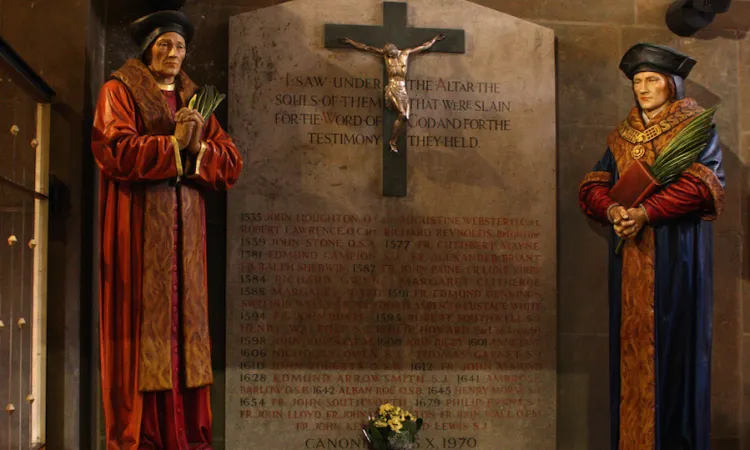More: Well . . . I believe, when statesmen forsake their own private conscience for the sake of their public duties, they lead their country by a short route to chaos.
Wolsey: You'd like that, wouldn't you? To govern the country by prayers?
More: Yes, I would. (Robert Bolt: A Man for All Seasons)
Thomas replaced Wolsey as Lord Chancellor of the Realm in 1529. Wolsey had failed to negotiate the divorce. Now the project belonged to him. Though Thomas served as Lord Chancellor until 1532, he resigned his post when he could no longer serve with a clear conscience. He retired to his home in Chelsea, but not for long. As the most prominent layman in the Realm and the only one except for Fisher who refused to endorse the marriage, pressure mounted to break his silence. He tried for as long as possible, relying on a maxim of the law which states that "silence is construed as giving one's consent" (Qui tacet consentire). Even the law failed to convince. Not silence, not the law but a full-throated assent to the marriage was what Henry wanted.
Thomas was arrested, imprisoned, and condemned to death for refusing to bend to the marriage. This was high treason and condemned him to death by beheading.
Execution
After months in the Tower, Thomas was beheaded in 1535. He died "the King's good servant but God's first." Throughout Europe, his execution was mourned. "So powerful was the memory of his personality that a whole school of biographers wrote his life in the late sixteenth century" (New Catholic Encyclopedia 9: 1139). In 1935, Pius XI canonized John Fisher, Thomas More, and the other martyrs who had been put to death during Henry VIII's bloody reign.
Utopia (1516)
Of all Thomas More's writings, his most famous work is Utopia. In it he develops several models of good and upright living. As a work of humanism, it considers solutions to political problems and to right governing. Though pride and greed will always be part of the human condition, still, the use of right reason born out of sound philosophy serves as a lodestar guiding the human condition.
Paul Scofield as St. Thomas More
Robert Bolt's A Man for All Seasons (1960) has eclipsed all earlier attempts to portray Thomas More on the stage. In 1966, Fred Zinnemann, produced and directed the moving screenplay, almost entirely based on Robert Bolt's play. The film won six Academy Awards, including Best Picture, Best Director, and Best Actor awarded to the British actor, Paul Scofield, the very personification of Thomas More. He played the role both in London and on Broadway, the latter appearance leading to a Tony Award.
The Title: "A Man for All Seasons"
The title of the play and film derives from a contemporary of Thomas More, Robert Whittington who in 1520 wrote of the future saint: "More is a man of an angel's wit and singular learning. I know not his fellow. For where is the man of that gentleness, lowliness, and affability? And, as time requires, a man of marvelous mirth and pastimes, and sometime of sad gravity? A man for all seasons."
John Fisher and Thomas More were made saints because they stood with the very few; and with them, willingly gave their lives for the soul of Catholic England.
Image: Sts. John Fisher and Thomas More. Credit: Lawrence OP via Flickr (CC BY 2.0)


